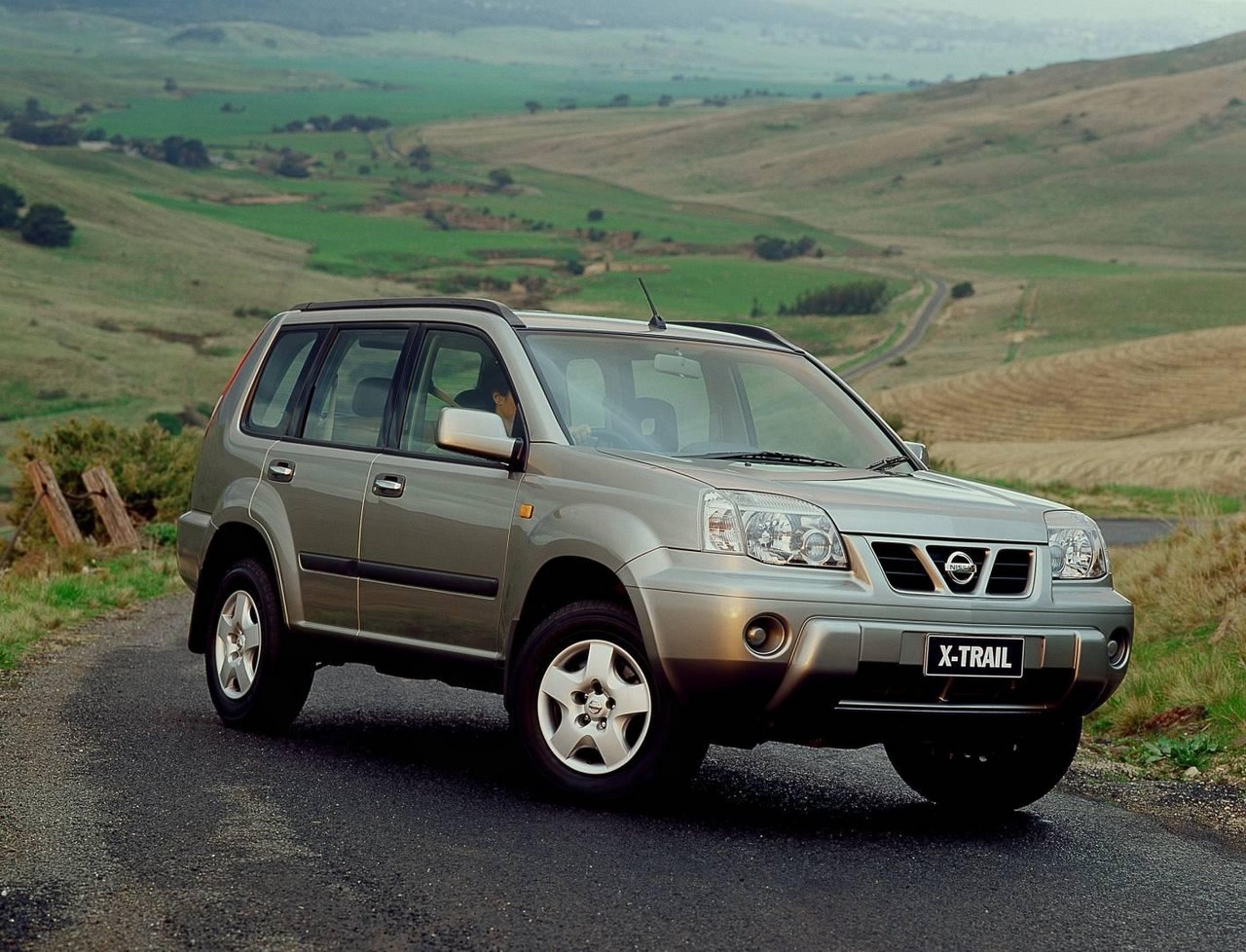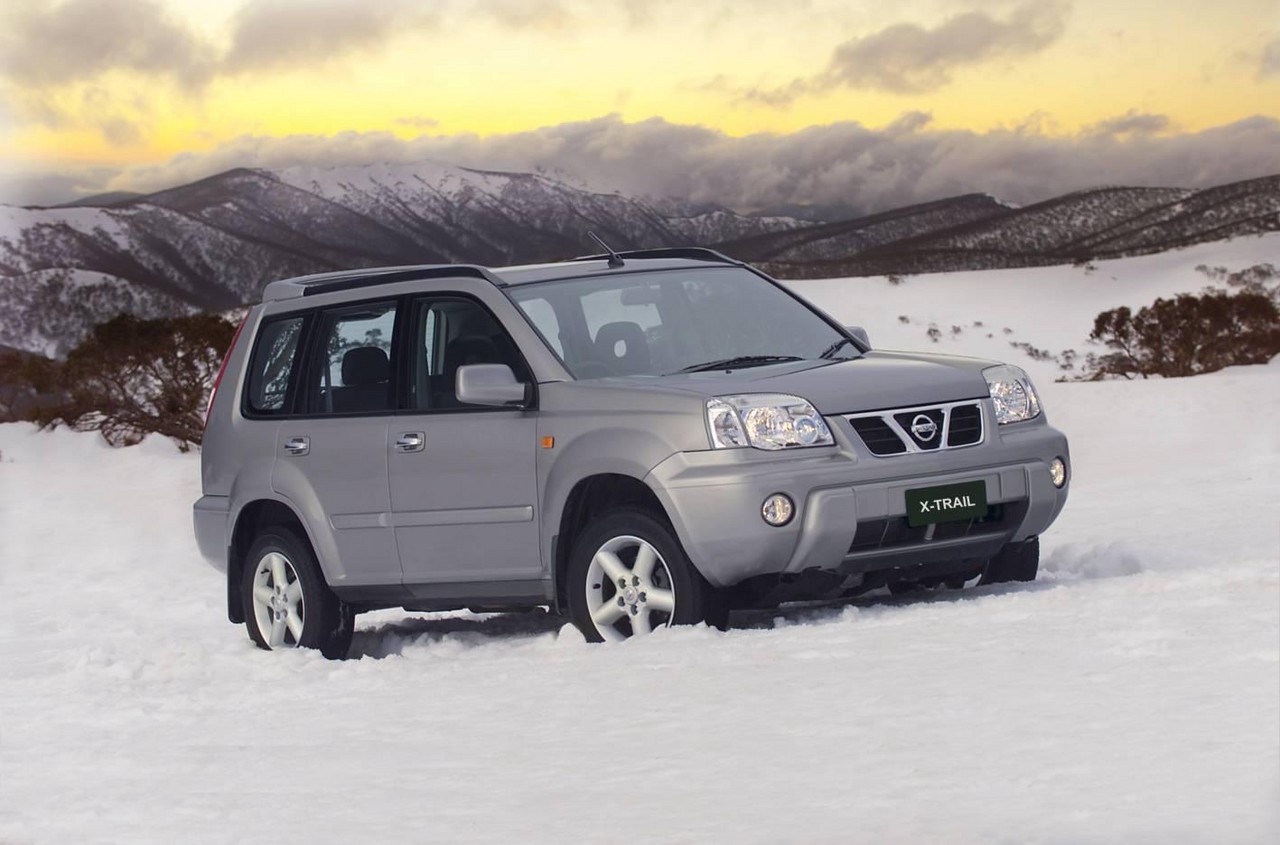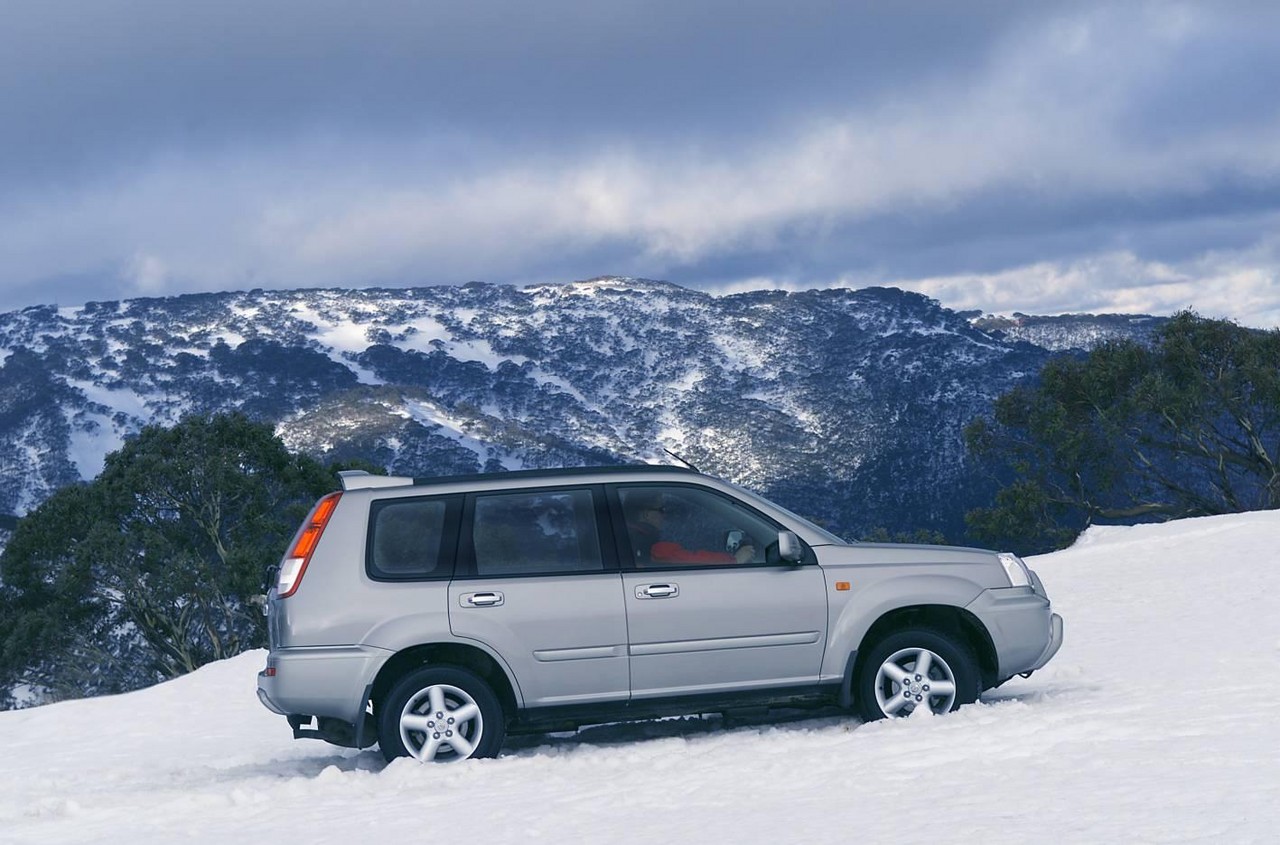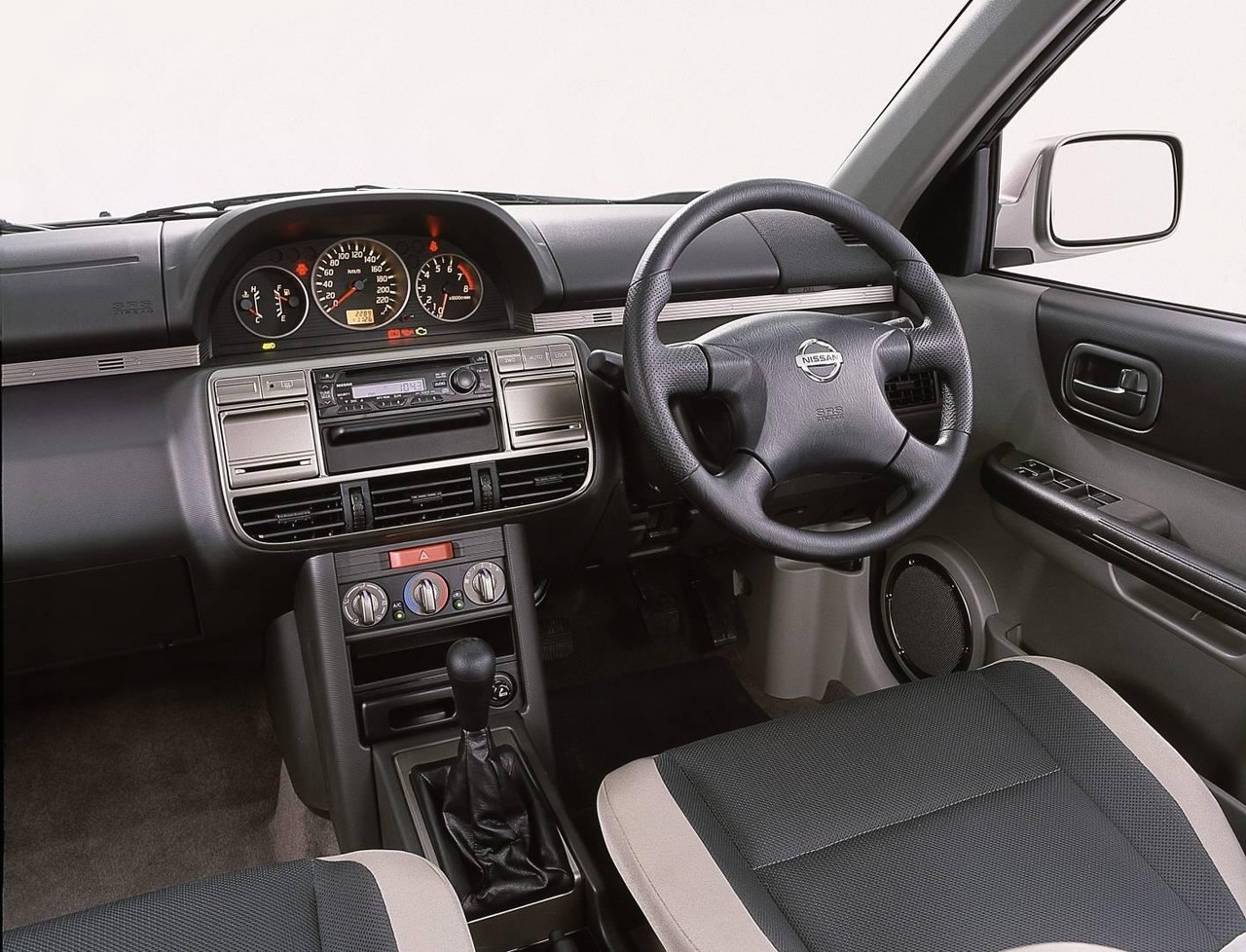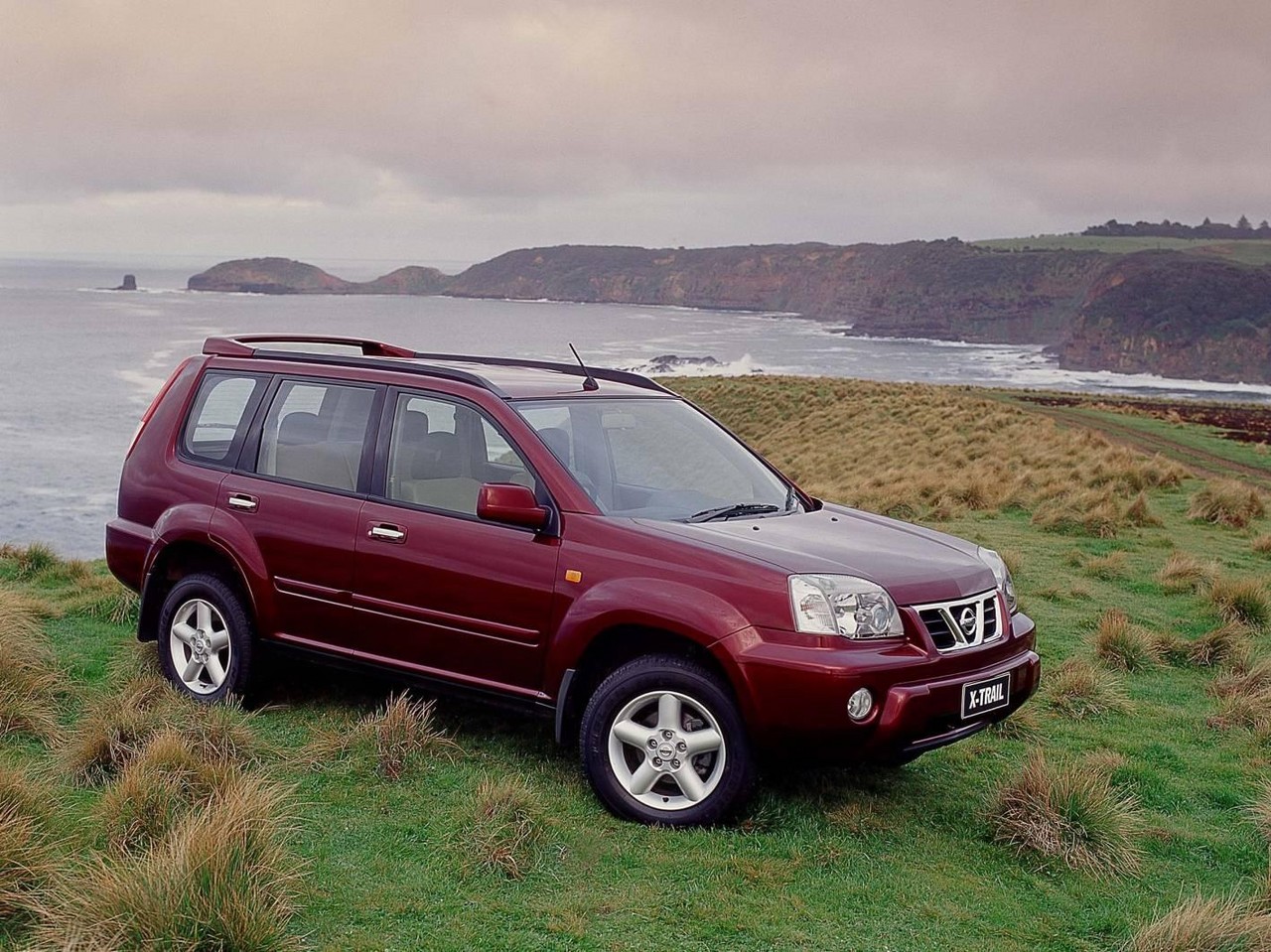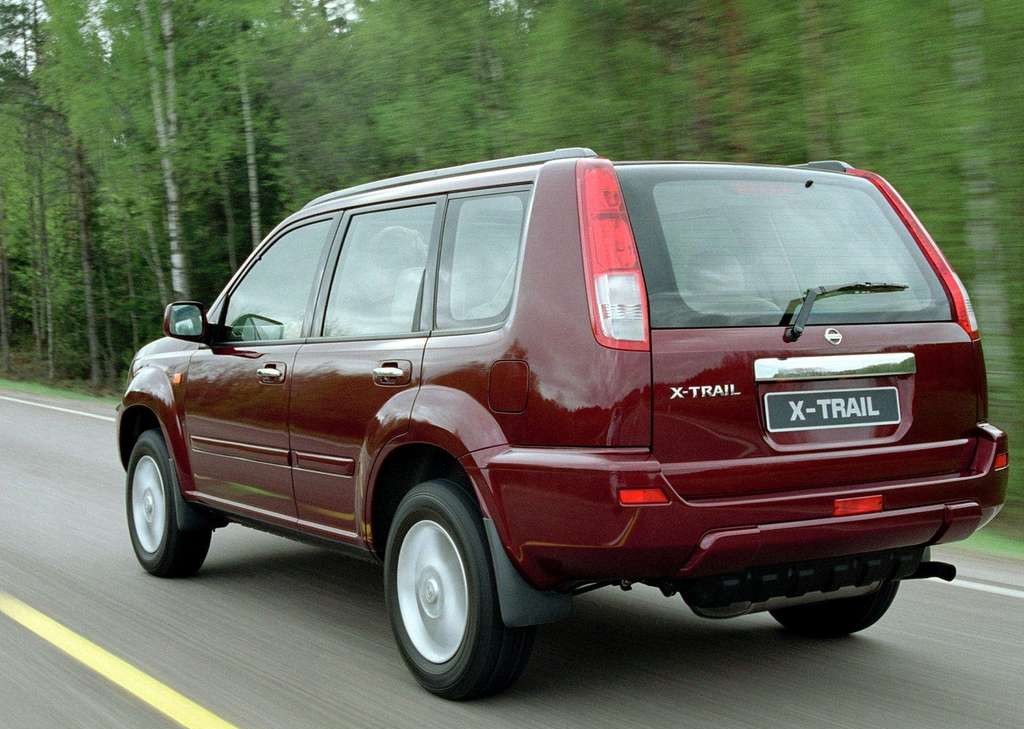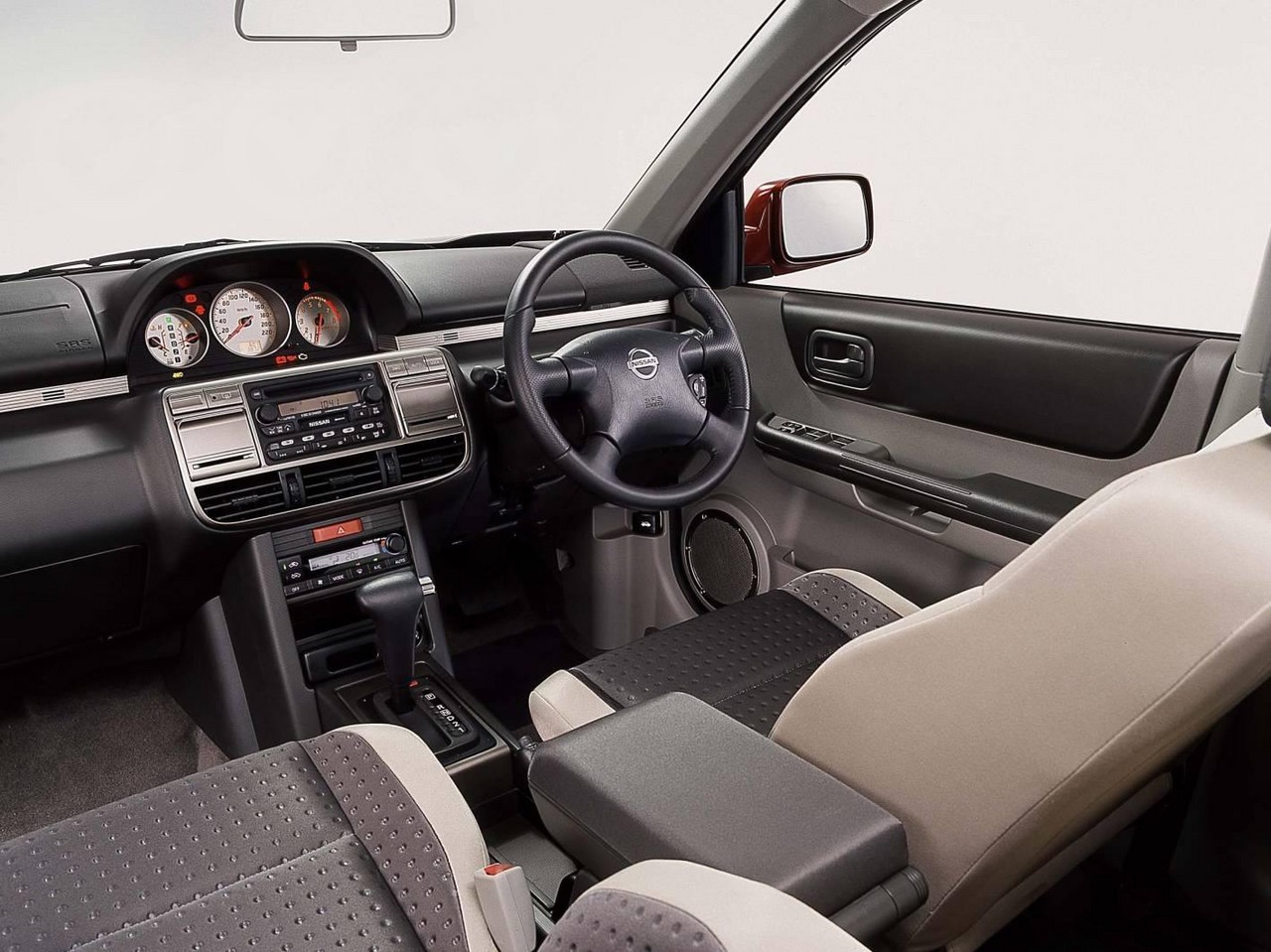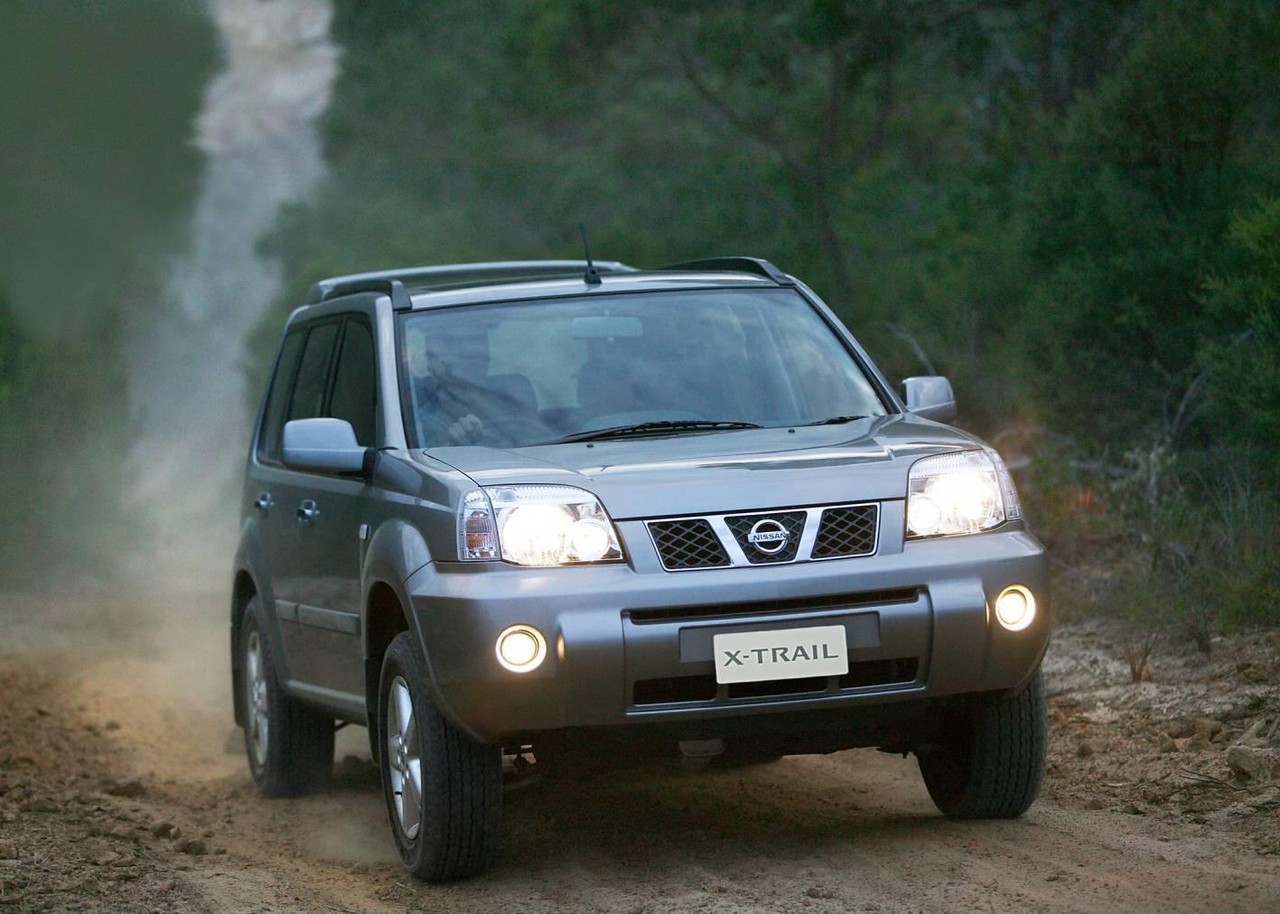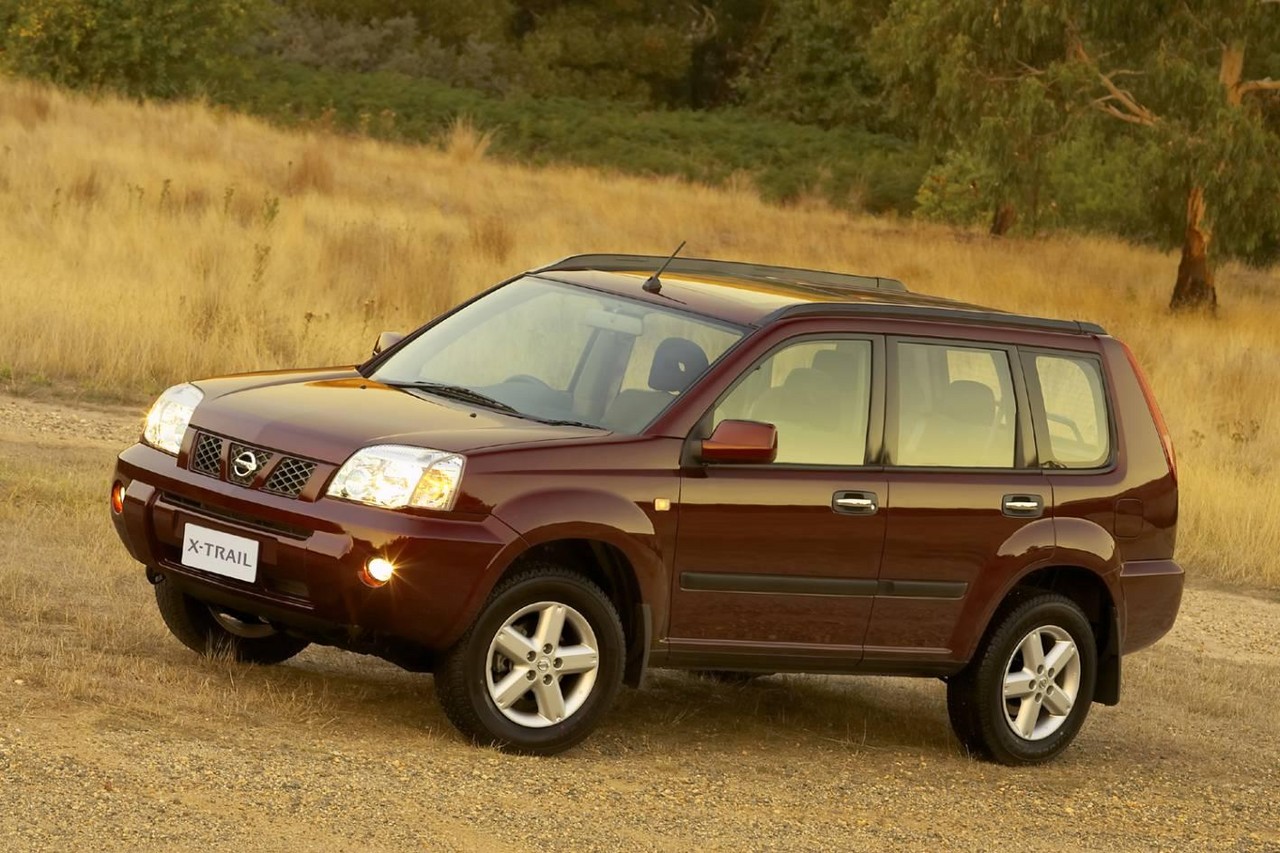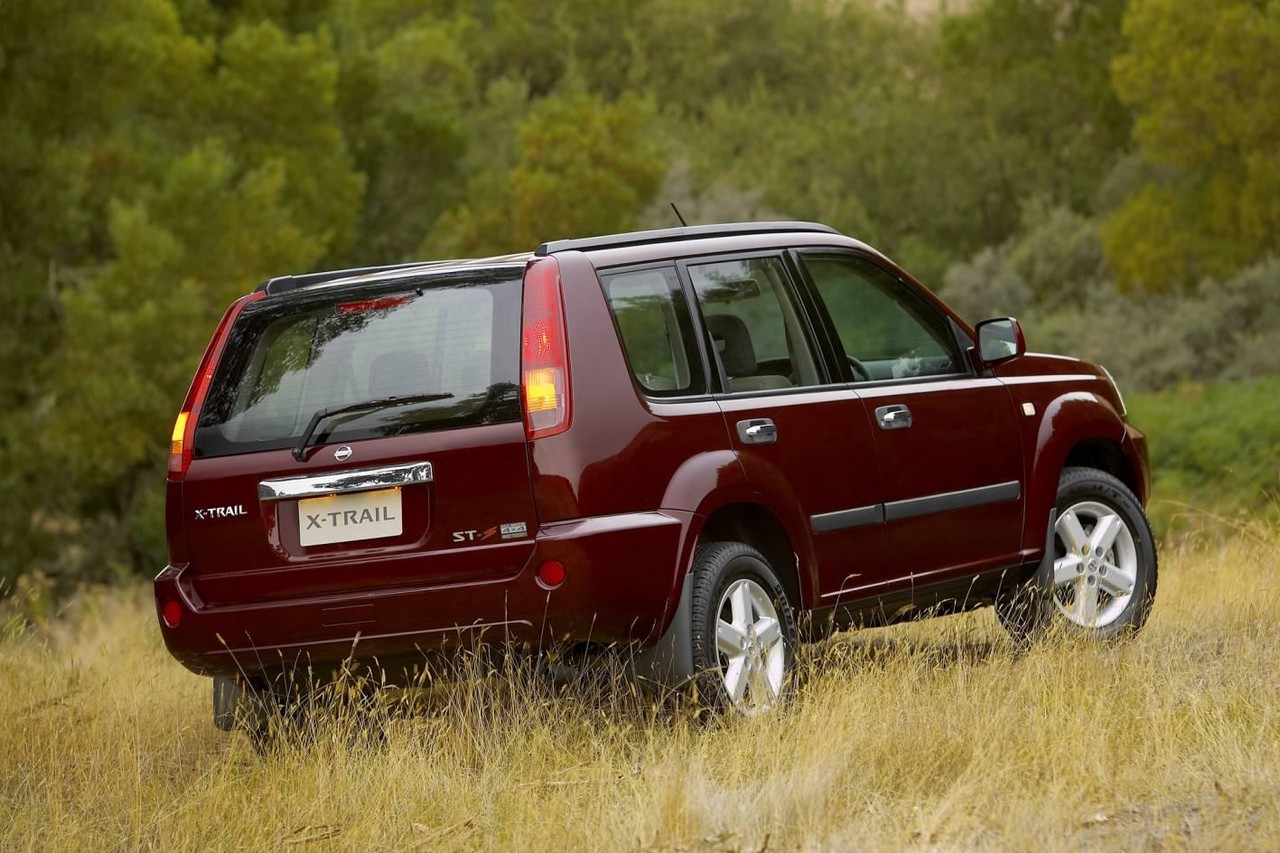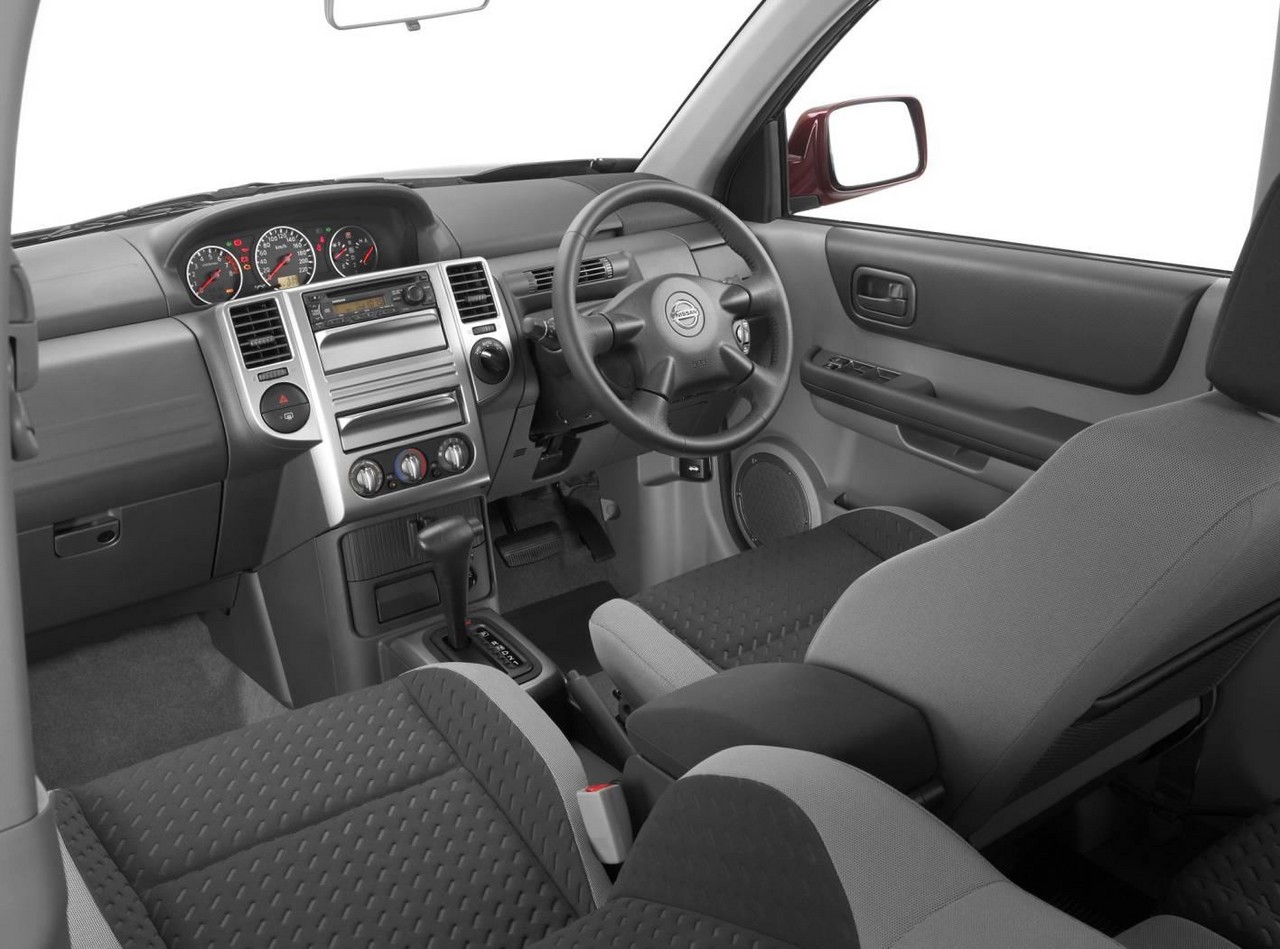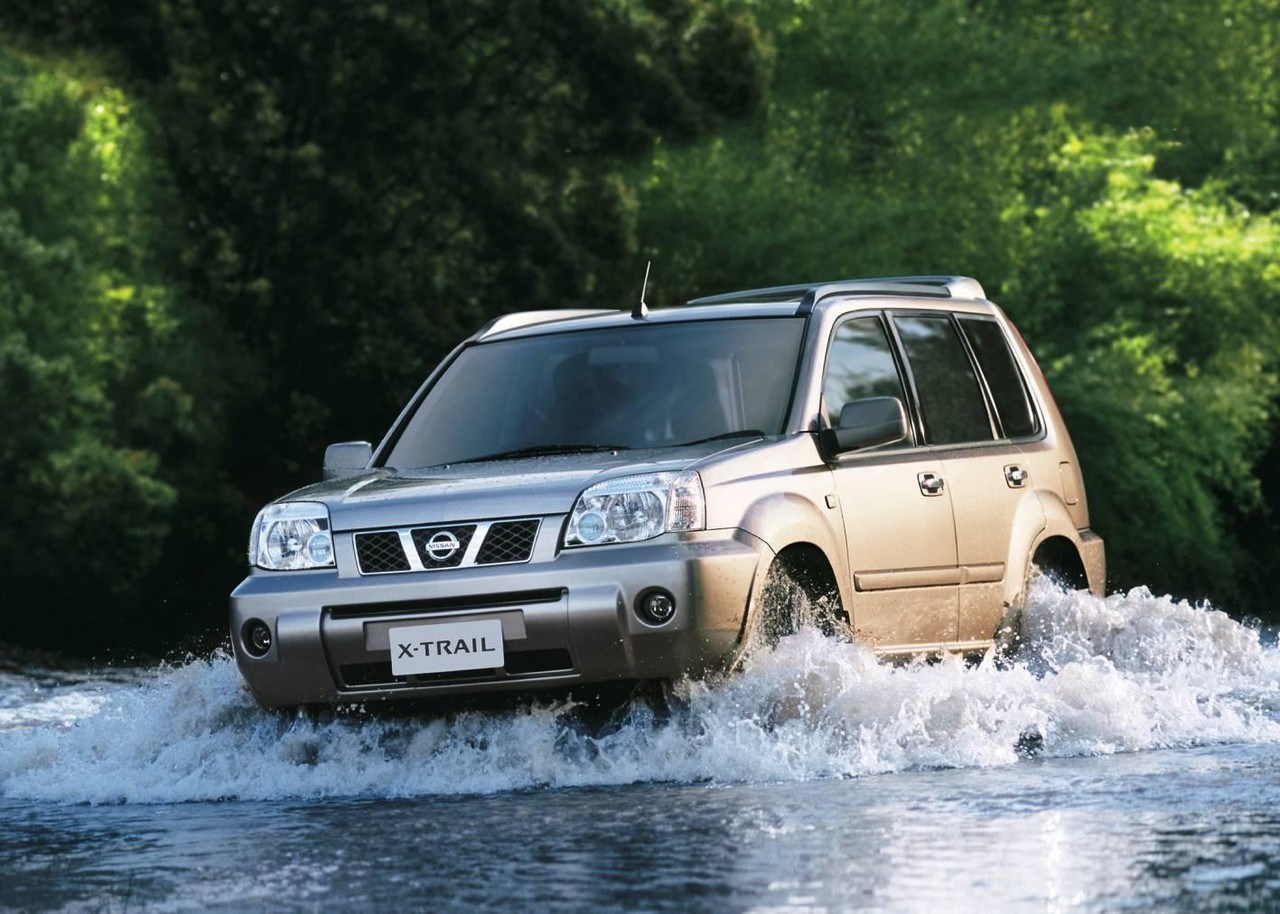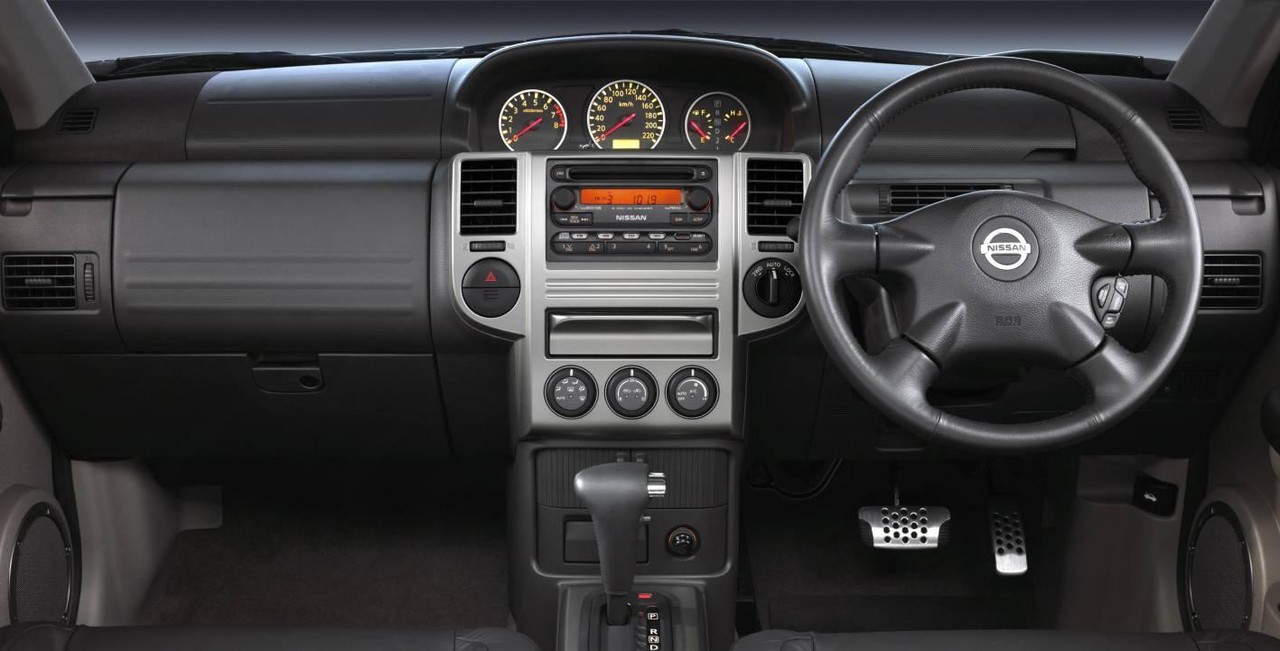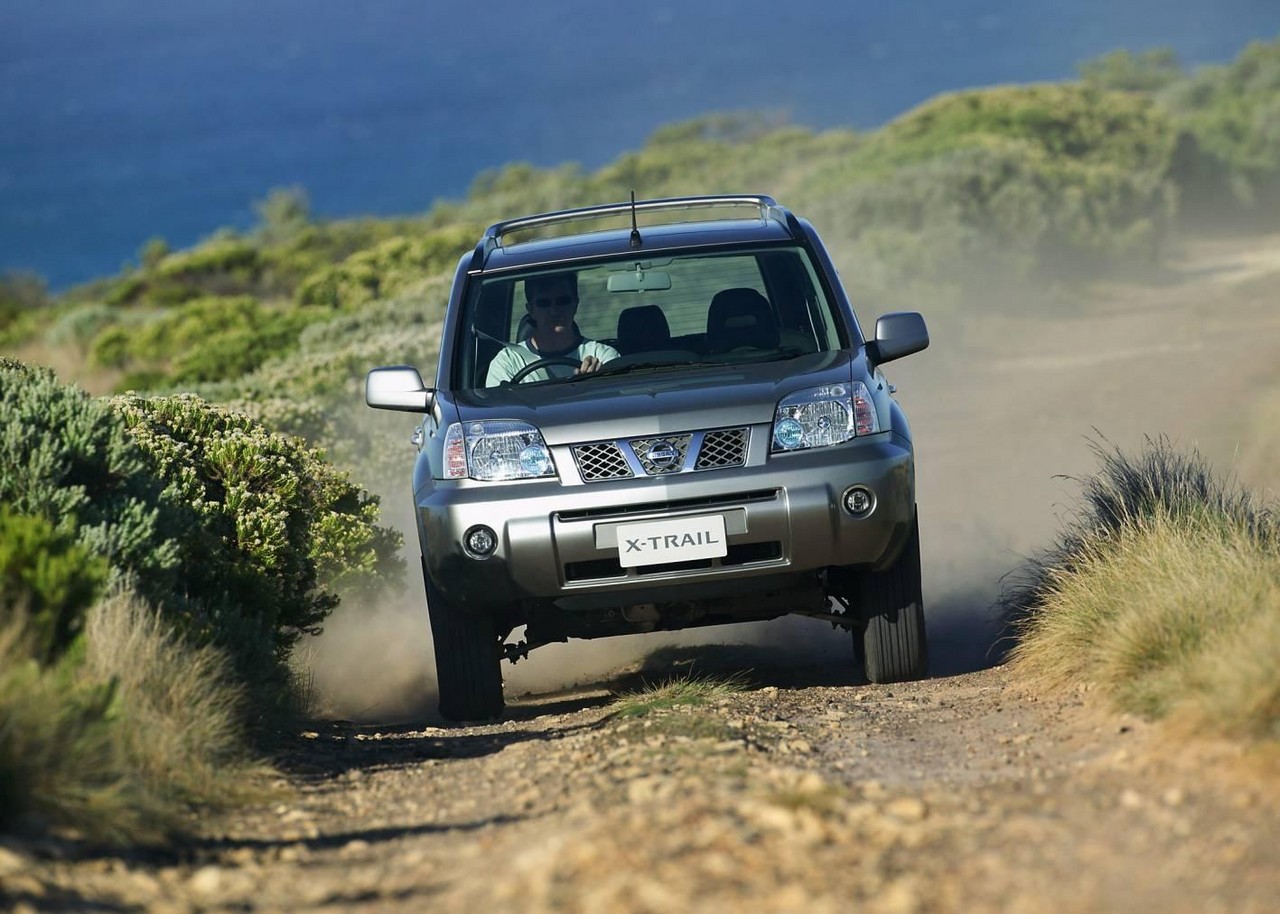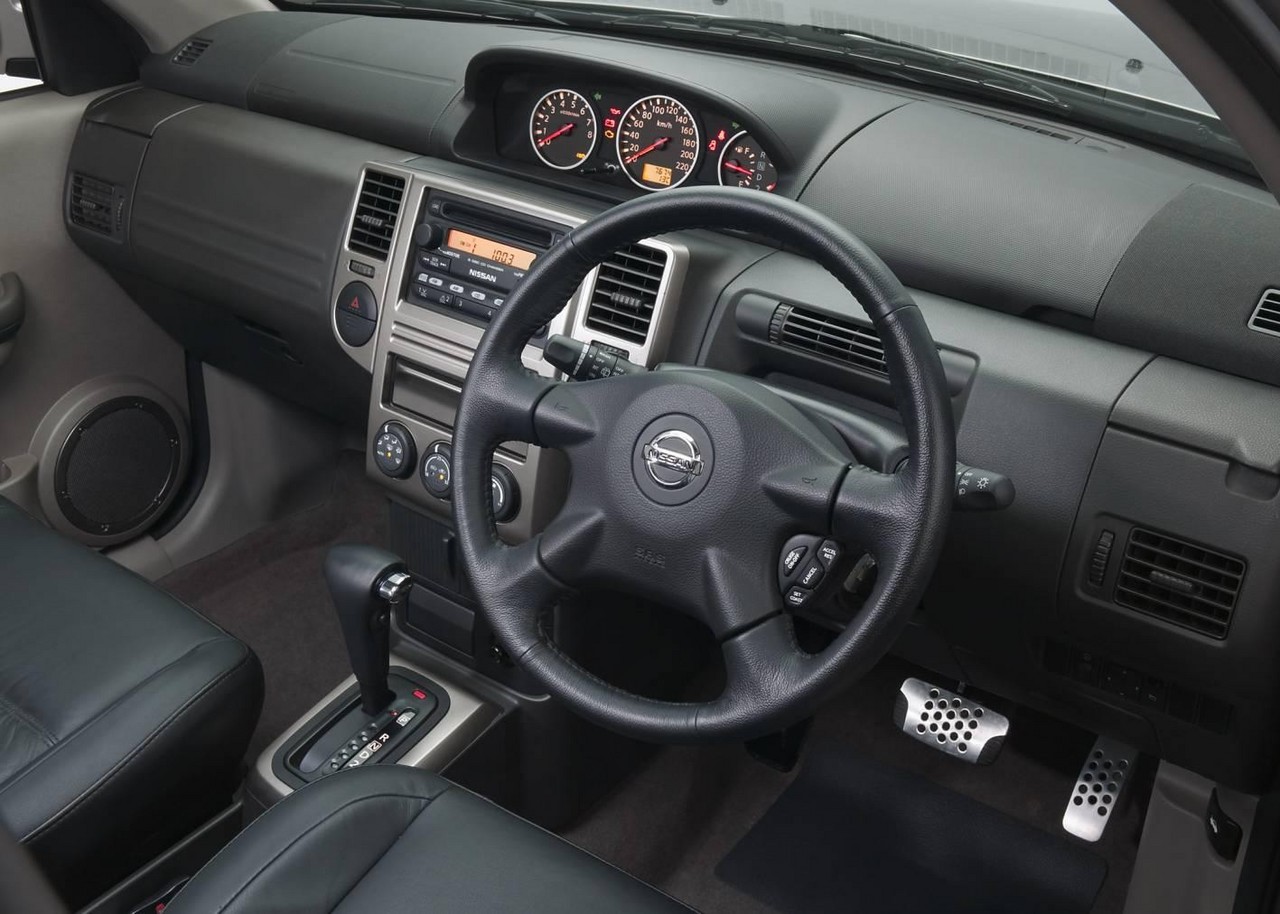
- Flexible and fuel-efficient 2.5-litre petrol engine
- Impressive ride/handling balance
- Practical interior
- Traction of 4×4-i system for off-road use
- Front seats lack lateral support
- Poor ergonomics: central speedometer and lack of steering reach adjustment
- Overly steering steering lacks feel
Review: Nissan T30.I X-Trail (2001-03)
Overview
Released in October 2001, the Nissan T30 Series I (T30.I) X-Trail was a five-seat, all-wheel drive SUV. Manufactured in Japan, the X-Trail was powered by 2.5-litre four-cylinder petrol engine that were mated eo either five-speed manual or four-speed automatic transmissions. The X-Trail range initially consisted of ST and Ti variants, though the range was expanded in 2002 with Luxury editions of the Ti variant and, in August 2003, with a limited run ST-R variant.
QR25DE engine
The T30 X-Trail was powered by Nissan’s 2.5-litre QR25DE four-cylinder petrol engine which had an aluminium block and cylinder head, double overhead camshafts, steel timing chain, counter-rotating balance shafts, an aluminium intake manifold, four valves per cylinder, variable valve timing and a compression ratio of 9.9:1.
Dimensions and suspension
The T30 X-Trail was 4510 mm long, 1765 mm wide, 1675 mm tall (1750 mm for the ST-R and Ti) and had a 2625 mm long wheelbase. Furthermore, the X-Trail had MacPherson strut front suspension with coil springs and an anti-roll bar; the rear suspension consisted of parallel-link struts, coil springs and an anti-roll bar. Both the front and rear suspension subframes had soft mounts to isolate noise without adversely affecting handling control.
| Variant | Years | Engine | Trans. | Peak power | Peak torque |
|---|---|---|---|---|---|
| ST | 2001-03 | 2.5-litre petrol I4 (QR25DE) |
4sp auto, 5sp man. |
132 kW at 6000 rpm | 245 Nm at 4000 rpm |
| ST-R | 2003 | ||||
| Ti | 2001-03 |
AWD system
The X-Trail was fitted Nissan’s ‘All Mode 4×4’ system which utilised an electronically-controlled coupling. The system had three driving modes that could be engaged via a dashboard button:
- 2WD: front-wheel drive only;
- AWD: primarily front-wheel drive but torque could be re-directed to the rear axle via an electronically controlled coupling if the front wheels lost traction); and,
- Lock: constant four-wheel drive with a 57:43 front:rear distribution for speeds of up to 30 km/h.
Safety equipment
Standard safety equipment for the T30 X-Trail included dual front airbags, ABS, brake assist, electronic brake force distribution and front seatbelts with pretensioners and load limiters.
Brakes
The T30 X-Trail had 280 mm by 28 mm vented front brake discs and 292 mm by 16 mm vented rear discs.
Euro NCAP and ANCAP crash testing
In Euro NCAP crash testing , a 2002 X-Trail with a 2.0-litre petrol engine – and equipped with dual front airbags and front side airbags with thorax and head protection, the latter not available in Australia – received a four star adult occupant protection rating with a score of 26.1; this score, however, included two points for seatbelt reminders which were not fitted in Australia. In the frontal impact, protection from serious leg injury was poor for the driver.
Given the absence of front side airbags for Australian vehicles, ANCAP conducted a side impact test in which the X-Trail scored maximum points. Combined with the Euro NCAP offset test results, this led to an Australian-specific four star adult occupant protection rating for the X-Trail with a score of 25.1.
Features: X-Trail ST, ST-R and Ti
Standard features for the entry-level X-Trail ST included a 15-inch steel wheels with 215/70 R15 tyres, a four speaker sound system with CD player, air conditioning, remote central locking, power mirrors and windows, a tilt adjustable steering wheel, roof rails and an immobiliser.
The Trail ST-R was further equipped with 16-inch alloy wheels with 215/65 R16 tyres, front fog lights, combination blue/black ‘dimpled’ seat trim and a rear spoiler.
Beyond this, the Trail Ti added a six speaker sound system with six-stack CD player, climate control air conditioning, cruise control and a leather-wrapped steering wheel, gearshift and hand brake. The Ti Luxury edition was distinguished by its leather seats and power sunroof.
Review: Nissan T30.II X-Trail (2003-07)
Overview
Released in November 2003, the T30 Series II (T30.II) X-Trail introduced a revised line-up and improved equipment levels. Initially, the range consisted of the ST, Ti and Ti-L variants; in 2004, the range was expanded with the ST-X variant, though this was effectively replaced by the ST-S from 2006.
Visually, the T30.II X-Trail could be identified by its redesigned bumpers and front grille; the Ti and Ti-L also had updated front fog lamps and 16-inch alloy wheels. In order to meet Euro III emission standards, the T30.II X-Trail’s 2.5-litre four-cylinder engine was detuned and therefore less powerful than its predecessor.
| Variant | Edition | Years | Engine | Trans. | Peak power | Peak torque |
|---|---|---|---|---|---|---|
| ST | N/A | 2003-07 | 2.5-litre petrol I4 (QR25DE) |
4sp auto, 5sp man. |
123 kW at 6000 rpm | 230 Nm at 4000 rpm |
| ST-S | 40th Anniversary | 2006 | ||||
| N/A | 2007 | |||||
| X-Treme | 2006-07 | |||||
| ST-X | N/A | 2004-05 | ||||
| Ti | N/A | 2003-07 | ||||
| Ti-L | Entertainment Pack | 2003-06 | ||||
| Sunroof Pack | 2003-07 |
Safety equipment
Compared to its T30.I predecessor, safety equipment was improved with active front seat head restraints fitted as standard across the range.
Features
Standard X-Trail features were extended to include cruise control, cooled front drink holders and a leather-wrapped steering wheel. The Ti was fitted with redesigned 16-inch alloy wheels and the range-topping Ti-L featured leather seats and power adjustable front seats; the Sunroof Pack added a power tilt/slide sunroof, while the Entertainment Pack added a rear seat DVD player with an eight-inch screen and wireless headphones.
The ST-S and ST-X were based on the ST, but added 16-inch alloy wheels and a power sunroof; the ST-X was also fitted with a rear cargo blind.
Related links
